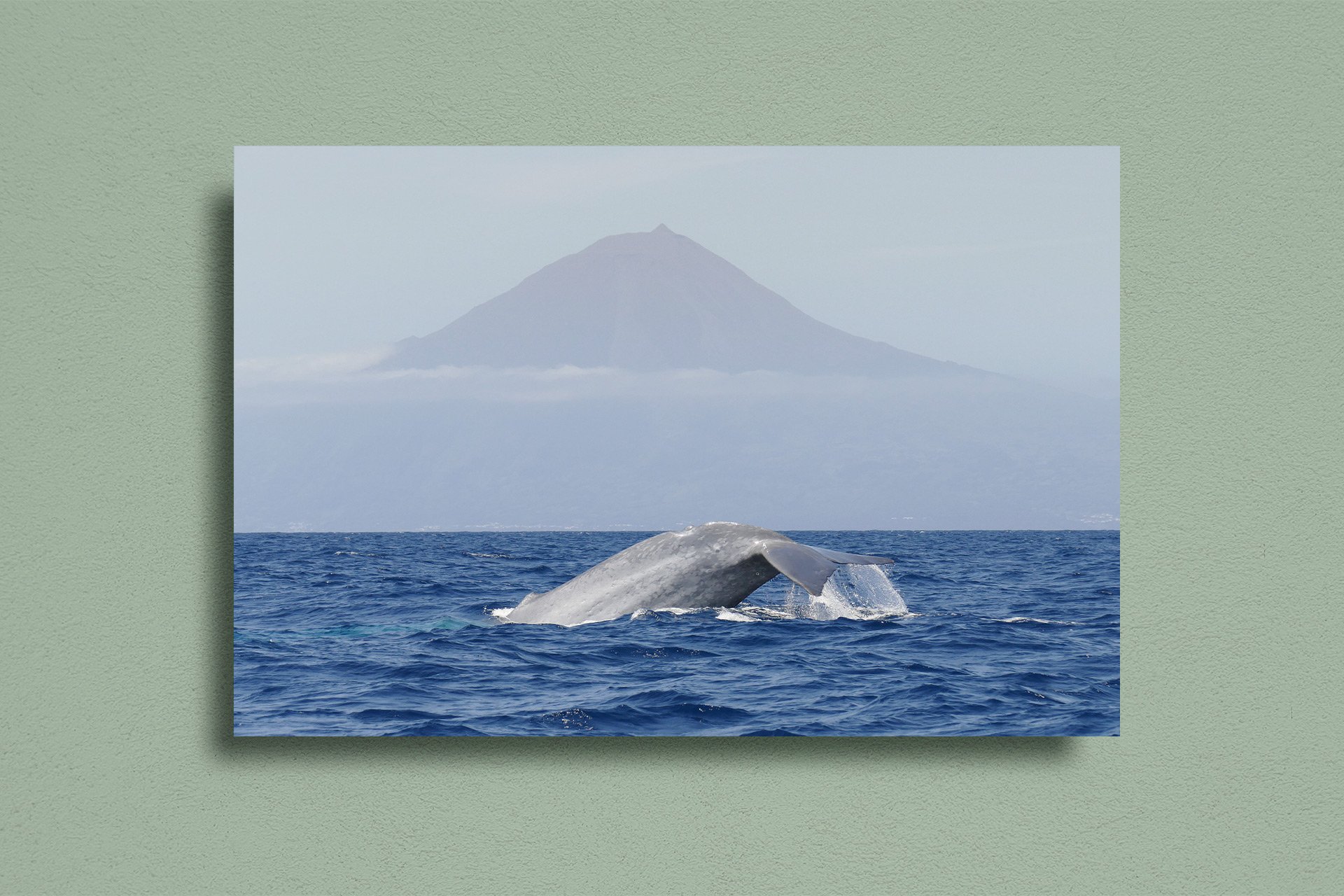NARWALE
Die Einhörner der Meere. Wer ihnen begegnen möchte, muss sich ziemlich weit nach Norden wagen.
Foto: Shutterstock
REVIEW: Narwale
Narwale leben extrem weit nördlich, direkt an der Grenze zum Packeis. Wer ihnen begegnen will, muss eine Reise mit dem Charakter einer echten Expedition unternehmen.
Es ist natürlich kompletter Unsinn, Narwale in die Top Ten eines Whale-Watching-Blogs aufzunehmen, wenn es doch eigentlich vollkommen ausgeschlossen ist, ihnen jemals auf touristischen Wegen zu begegnen. Kein Wal lebt weiter nördlich als der Narwal, am liebsten hält er sich direkt an der Packeisgrenze auf, und selbst im Sommer findet man ihn nur selten südlicher als 70° Nord. Man muss also sehr, sehr weit nach Norden fahren, um eine Chance auf Narwale zu haben. Reisen mit Expeditions-Charakter.
Die bekanntesten und beeindruckendsten Bilder von Narwalen stammen vom National-Geographic-Fotografen Paul Nicklen, der selbst hoch oben im arktischen Nunavut aufgewachsen ist. Obwohl er sich in dieser Umgebung fast so sicher bewegt, wie die einheimischen Inuit, brauchte er über zehn Jahre und ein Ultraleichtflugzeug (!), bis er endlich Narwale in den aufbrechenden Eisrinnen Nunavuts vor die Linse bekam.
Wale, die in so entlegenen Gebieten leben, haben in einem Whale-Watching-Blog eigentlich nichts verloren. Aber man muss auch unrealistische Ziele haben.
„Es ist wahrscheinlich, dass der Stoßzahn wie ein Sinnesorgan funktioniert, mit dem Narwale Temperatur, Salzgehalt und Druck des Wassers feststellen können – eine ziemlich nützliche Funktion, wenn man nahe der Packeisgrenze lebt und ständig auf der Suche nach aufbrechenden Rinnen im Eis ist.“
Narwale sind die Einhörner der Meere – Fabelwesen, nur in echt, Narwale gibt es wirklich. Allerdings sind sie extrem scheu und zurückgezogen. Ihr Einhorn ist zudem kein Horn, sondern ein Zahn, der bei fast allen jungen Männchen auf der linken Seite durch die Oberlippe bricht. Er ist spiralförmig gedreht, wiegt gute 10 Kilo und kann bis zu 3 Meter lang werden. Manche Männchen haben sogar zwei solche Zähne, Weibchen haben bis auf sehr wenige Ausnahmen gar keinen.
Wozu dieser Zahn dient, ist noch nicht abschließend geklärt. Ganz früher dachte man, er habe magische Heilkräfte, vor allem in Asien, dort glaubt man ja auch an Tiger-Hoden und Hai-Flossen, Narwale waren daher eine lukrative Beute für den asiatischen Markt. In Europa wurde der Narwal-Zahn von gewitzten Händlern einfach als Horn des Fabel-Einhorns verkauft, wahrscheinlich zu einem noch viel besseren Kurs. So oder so wurden Narwale von den Walfängern des 19. und 20. Jahrhunderts stark bejagt, vor allem wegen ihres Zahns.
In Europa wurde der Narwal-Zahn von gewitzten Händlern über viele Jahrhunderte hinweg als Horn des Fabel-Einhorns verkauft.
Heute vermutet man, dass der Zahn einerseits ein sekundäres Geschlechtsmerkmal ist – je größer der Zahn, desto höher der Status des Männchens, desto mehr Weibchen in der Paarungszeit. Andererseits ist es aber sehr wahrscheinlich, dass der Zahn auch wie ein Sinnesorgan funktioniert, mit dem Narwale Temperatur, Salzgehalt und Druck des Wassers feststellen können – eine ziemlich nützliche Funktion, wenn man nahe der Packeisgrenze lebt und ständig auf der Suche nach aufbrechenden Rinnen im Eis ist. Darüber hinaus eignet sich so ein Stoßzahn wahrscheinlich auch hervorragend, um mit rivalisierenden Männchen zu kämpfen.
Ein mysteriöser Stoßzahn und die absolute Unerreichbarkeit im hocharktischen Polarmeer – das ist die Kombination, die den Narwal so faszinierend und geheimnisvoll macht.
Foto: Shutterstock
GRÖSSE
Männchen werden 4 bis 6 Meter, Weibchen 3,5 bis 5 Meter groß. Gewicht: bis ca. 1,5 Tonnen.
FARBE
Grau bis braun, am ganzen Körper gesprenkelt, auf der Unterseite fast weiß. Jungtiere sind grau, mit zunehmenden Alter werden Narwale immer heller, sehr alte Tiere sind fast weiß.
FORM
Kleiner Kopf mit kurzer Schnauze und deutlicher Melone. Gedrungener Körper, im Vergleich zum etwas unförmigen Beluga aber deutlich stromlinienförmiger.
BLAS
Der Blas der Narwale ist sehr niedrig, unscheinbar und auch nicht besonders laut.
FINNE
Narwale haben keine Finne, stattdessen wie Belugas einen kleinen Buckel.
FLUKE
Im Alter verformt sich die Fluke immer stärker, bis sie bei alten Tieren fast herzförmig ist.
VERHALTEN
Schnelle Schwimmer, sehr scheu, gehen Menschen aus dem Weg. Durchaus akrobatisch, häufiges Spyhopping.
TAUCHGÄNGE
Narwale können bis zu 1.500 Meter tief tauchen. Meist bleiben sie zwischen 7 und 20 Minuten unter Wasser.
BESTAND
Unklar, wahrscheinlich gibt es weltweit noch ca. 80.000 Tiere, die nur regional bedroht sind.
Foto: Shutterstock
CHECKLISTE: Narwale
Männliche Narwale haben einen zwei bis drei Meter langen Stoßzahn, der sie einzigartig und unverwechselbar macht.
Narwale bewegen sich äußerst schnell und unauffällig an der Oberfläche, meist sieht man sie nur für ganz kurze Zeit, bevor sie wieder für mehrere Minuten abtauchen. Nur während ihrer Wanderungen bleiben sie die meiste Zeit an der Oberfläche, wobei die Männchen beim Atmen gelegentlich auch den Stoßzahn aus dem Wasser strecken.
„Narwale können sehr akrobatisch sein. Sie schlagen gern mit Fluke und Flippern auf das Wasser, schauen sich oft um, und je nach Tauchtiefe heben sie manchmal ihre herzförmige Fluke aus dem Wasser.“
Meist sind einzelne Narwal-Gruppen nach Geschlecht und Alter getrennt – Weibchen mit Kälbern in der einen, Männchen mit Jungtieren in der anderen. Die weiblichen Gruppen halten sich meist etwas näher an der Küste auf als die männlichen.
Narwale können sehr akrobatisch sein. Sie schlagen gern mit Fluke und Flippern auf das Wasser, schauen sich oft um, und je nach Tauchtiefe heben sie manchmal ihre herzförmige Fluke. Sprünge kommen nicht vor, allenfalls beim Auftauchen ein kleiner Satz nach vorne. Männchen fechten manchmal mit ihren Stoßzähnen.
Foto: Oliver Dirr / Whaletrips
WO UND WANN: Narwale
Die besten Chancen, Narwalen zu begegnen, hat man im Sommer an den Küsten von Arctic Bay, Pond Inlet oder Resolute Bay im arktischen Kanada sowie in Thule, ganz im Norden Grönlands.
Narwale zu beobachten, ist als Normaltourist weitgehend ausgeschlossen, sie sind die am nördlichsten lebenden Wale überhaupt. Zwar kommen sie im gesamten Nordpolarmeer vor, allerdings stets nahe der Eisgrenze.
Während sie im Winter in kleineren Gruppen so weit wie möglich nach Norden ziehen, versammeln sie sich im Frühjahr und Sommer in deutlich größerer Zahl nahe der Küste, meist in kalten, tiefen Buchten und Meerengen, wenn sie dem aufbrechenden Eis folgen. Mitunter versammeln sich hier Hunderte oder Tausende Tiere. Narwale sind relativ ortstreu und kehren im Frühjahr je nach Eislage immer wieder in dieselben Gebiete zurück.
Der ideale Begleiter für eure nächste Walreise: Im Shop findet ihr unsere TRAVEL NOTES in fünf tollen Farben – mit den wichtigsten Wal-Infos für unterwegs und ganz viel Platz für eigene Notizen, Beobachtungen und Erinnerungen. Jetzt bestellen!
Es gibt große Populationen rund um Grönland und in den arktischen Gewässern der kanadischen Provinz Nunavut. Narwale im Winter zu beobachten, ist in diesen Breitengraden eher ausgeschlossen – zu dunkel, zu kalt, zu schlechtes Wetter. Im Frühling und Sommer hat man die besten Chancen an den Küsten von Arctic Bay, Pond Inlet oder Resolute Bay in Kanada sowie in Thule im Norden bzw. Umanak im Westen Grönlands. Ein Besuch dieser Orte hat allerdings Expeditions-Charakter.
Mit sehr viel Glück kann man auch in Québec einem Narwal begegnen – und zwar genau einem. Im St. Lawrence lebt nämlich ein einzelnes Männchen, das sich irgendwie in den Süden verirrt hat. Es wurde dort von einer Gruppe Belugas aufgenommen und scheint sich ganz gut eingelebt zu haben: Es wird alle paar Monate gesichtet und macht bislang keine Anstalten, wieder nach Norden zu ziehen.
Noch mehr Wale
〰️
Noch mehr Wale 〰️
Whaletrips Shop
Über den Wal, die Welt und das Staunen
Das Beste aus zehn Jahren Walfahrt. Bei uns im Whaletrips-Shop auch mit persönlicher Widmung nach Wunsch!
Whaletrips Shop
Unsere Wale als Karten und Sticker
Farbenfroh, schwarz-weiß illustriert, zum Aufkleben: Unsere Wale gibt es auch als Sticker- und Grußkarten-Set!
Whaletrips Shop
Notizhefte: Unsere Notes und Travel Notes
Die idealen Begleiter für eure nächste Walfahrt: in fünf tollen Farben im Whaletrips-Shop erhältlich!
Whaletrips Shop
Elegante Fine Art Prints für Zuhause
Unsere beliebtesten Motive gibt es auch als edle Fine Art Prints für Zuhause. Verschönern jede Wand!











